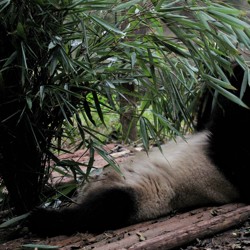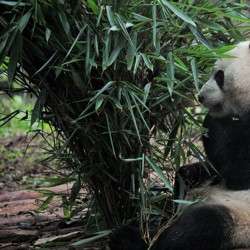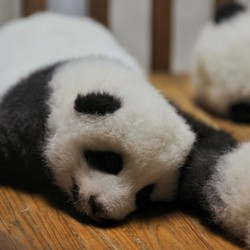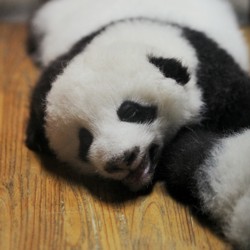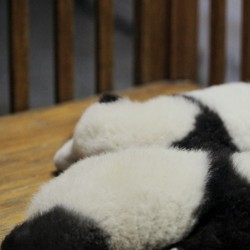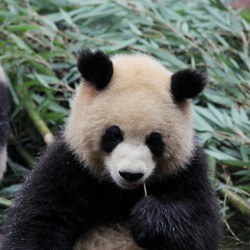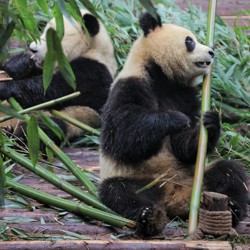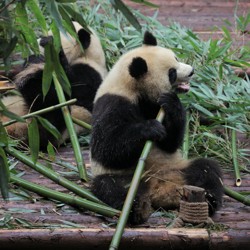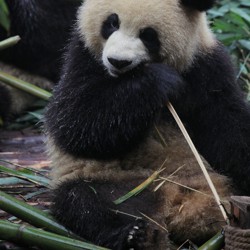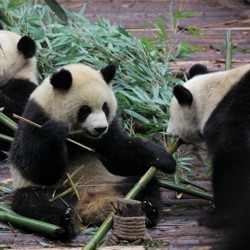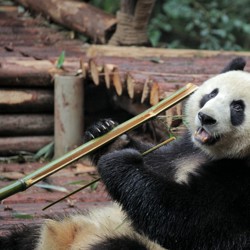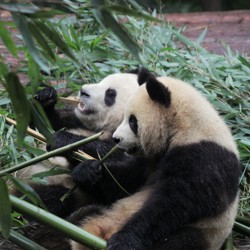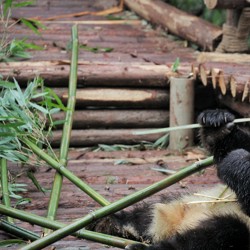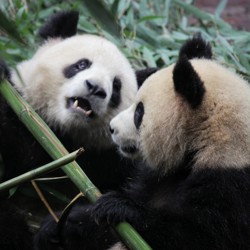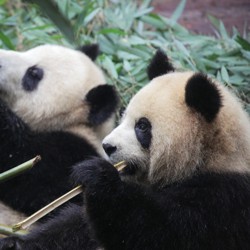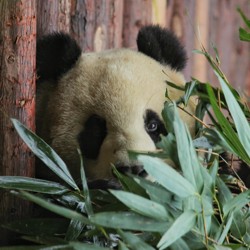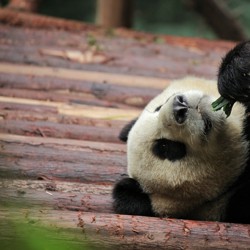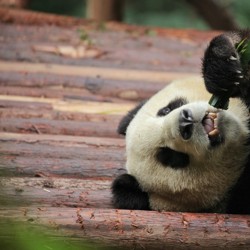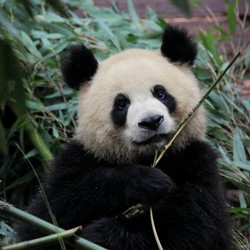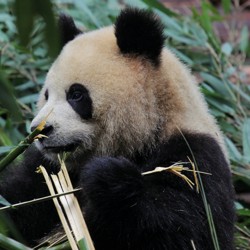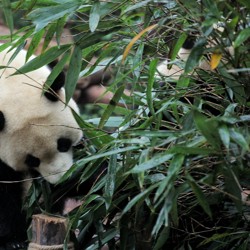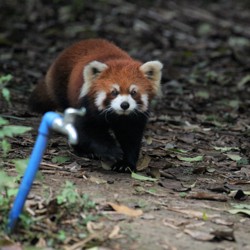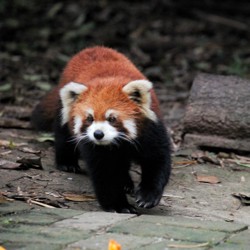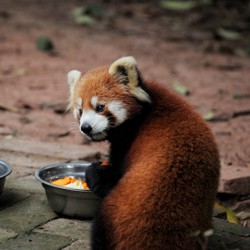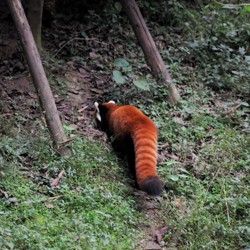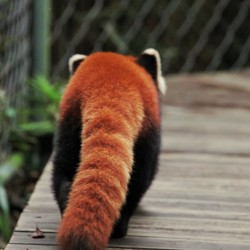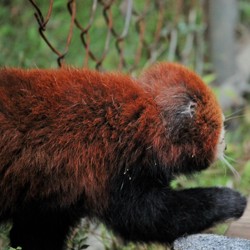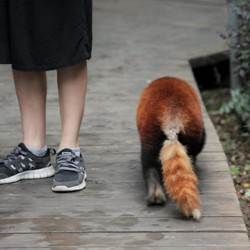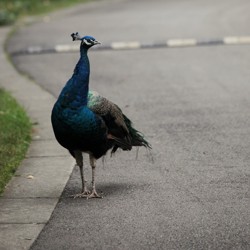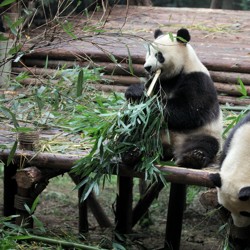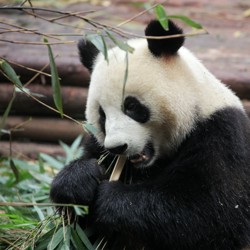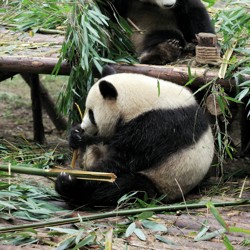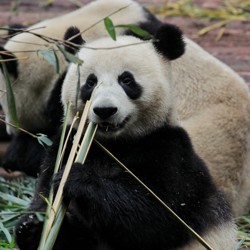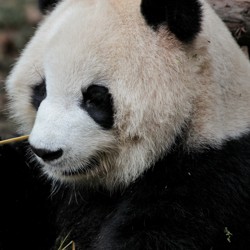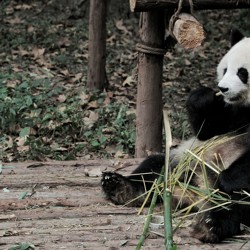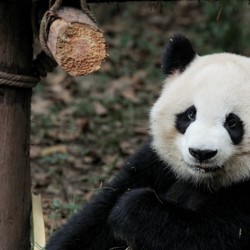03. November 2015
Chéngdū - Pandas
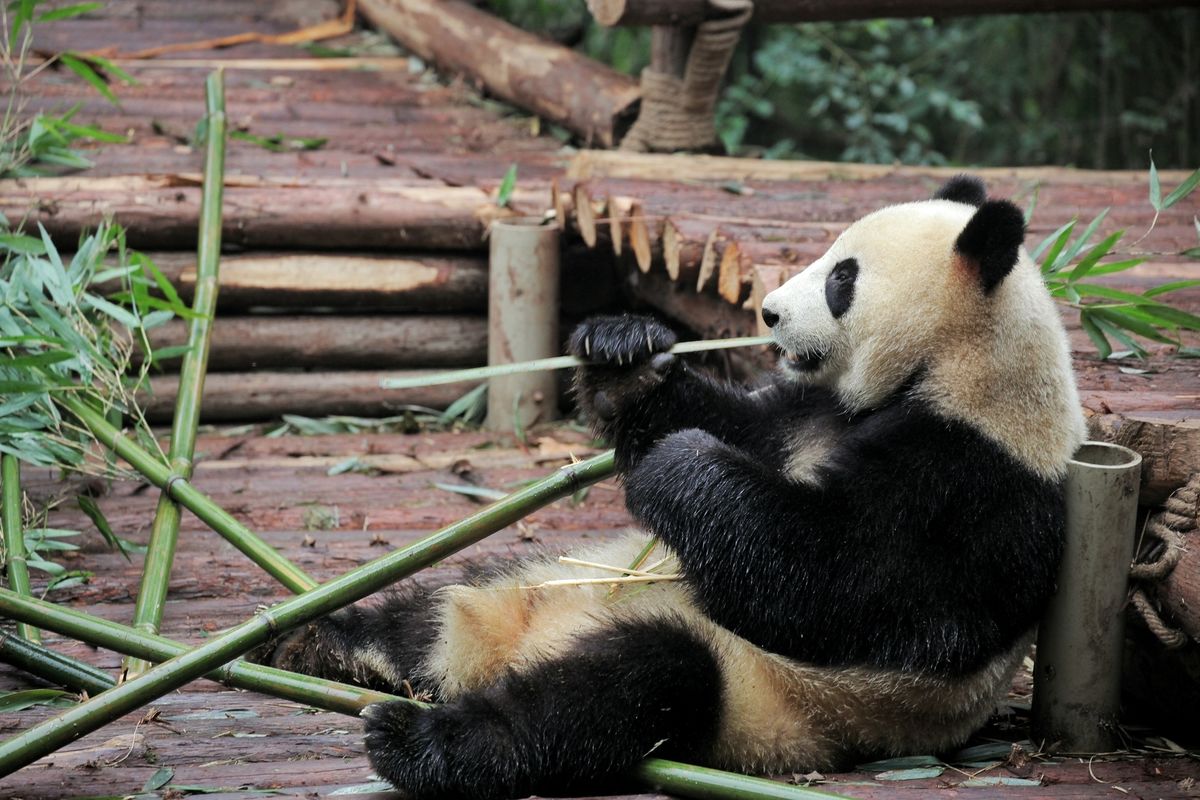
The giant panda is – if you leave out the fictional dragons – the animal most commonly associated with China. But although China has made some progress in protecting this living fossil, the giant panda is still an endangered species and its habitat is much smaller than it once was.
One of Chéngdū’s main attractions is the Giant Panda Breeding Research Base, where a lot of pandas have been born in captivity in the last years in an attempt to save the species – which is more difficult than it sounds. The giant panda is a strange species with a very special adaption. Although having the digestive tract of a carnivore, they almost exclusively eat bamboo, one of the least energy efficient plants to consume. They are only able to digest it at all due to some microbes passed to them by their mother. Having some very special mating rituals, not that much interest in sex and only a very short fertile period during the year, their reproduction rate in the wild is low and it took many years until researchers were able to figure out the correct conditions for mating in capitivity. On top of that the newborns are very underdeveloped – much like a child born too early for other mammals – and weigh only around 1/800th of their mother, which sometimes leads to her accidentally hurting her own child.
While the giant pandas may be considered to be “too dumb to live” (as often stated by another traveller), they are no doubt very cute, looking very much like a teddy bear. Together with the also endangered red pandas (which are not really related to the giant pandas) they therefore attract many visitors to the Giant Panda Breeding Research Base.
